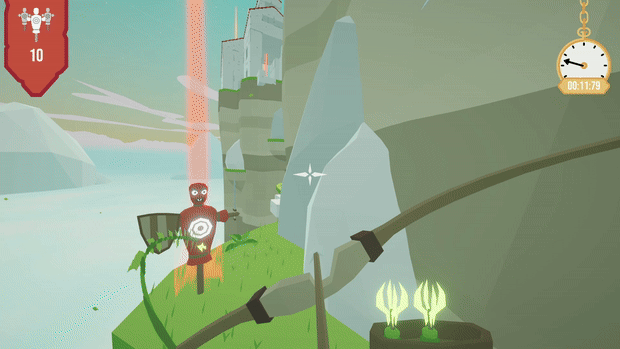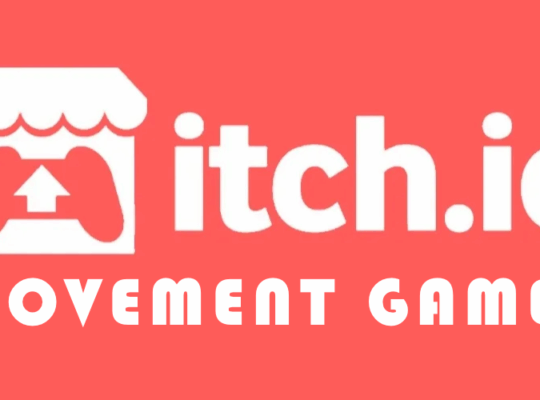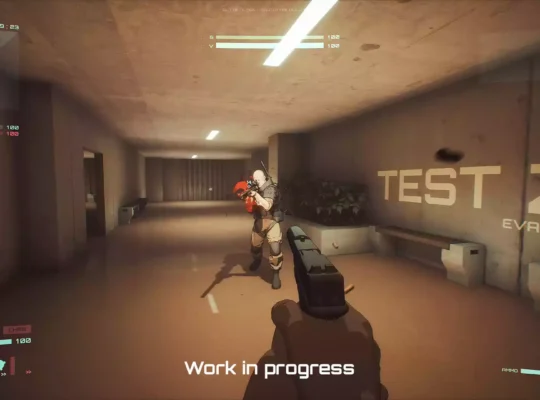Arrows and Antiquity is an upcoming indie action game developed and published by True Neutral Studios, slated for release in 2025. This fast-paced, first-person shooter combines archery mechanics with speedrunning elements, challenging players to swiftly defeat bandits in the crumbling ruins of antiquity. Theo, the main developer, shared some insights on developing the game and where he drew inspiration from.
Tell us a little about yourself and how you got started in game development.
Theo: I started programming in highschool. I was excited for Skyrim’s release and was motivated enough to learn Python and make a text-based adventure game. It wasn’t good and was 99% spaghetti code, but I really enjoyed the process, and programming felt natural to me.
From there, I pursued a career in software engineering while continuing to develop games as a hobby. I learned Unity and joined a game dev club while in college, and made several projects that would go on to become primarily resume filler. After graduating college, I spent several years in the tech industry before taking a hiatus to focus more seriously on game development.
For the past 2.5 years, I’ve been working part-time on Arrows and Antiquity (and some previous prototypes).
What inspired your latest game, and what was the initial vision behind it?
Theo: It started as a hunting game where you blow up animals with rocket launchers. Then it turned into a time-based target-smash score attack. Now it’s a speedrunning archery puzzle platformer. So the vision has moved around a lot.
I can’t pinpoint a particular influence for the previous prototypes, but the current iteration is heavily inspired by Neon White. I have a lot of respect for how that game encourages mastery of the mechanics through its well designed and highly replayable levels.
I’m aiming to capture a similar gameplay loop with a focus on pure gameplay and maintaining player control at all times, while minimizing narrative elements.

What were some of the biggest challenges you faced during development?
Theo: Finding out I was bad at game design. I walked into this process lacking a clear vision of what I wanted to make AND what it meant to make a game. I started by randomly sticking mechanics together without considering how the elements would contribute to a greater vision. It took me a while (and a lot of thrown away content) to establish a set of mechanics that cohesively communicated a core experience.
On the technical side, it was never really one thing, but tasks would often rabbit hole into a significant amount of work and research. Things like input rebinding, controller support, save systems, and tooling for level design (like my terrain creation tool) all had lots of design implications that rippled through the code base.
Is there a particular moment or feature in your game that you’re especially proud of?
Theo: I am proud that the game is fairly simple, but that the simple mechanics (types of arrows and basic movement) combine to make numerous unique and enjoyable situations.
I’m also proud that the game world is interconnected with no loading screens. It took a while to get that feeling right, but I think it really helps with immersion by not taking control away from the player.
How do you approach balancing creativity with the realities of budget, time, and resources?
Theo: Setting constraints helps. For example, I decided early on that I was NOT going to do multiplayer. If an idea popped in my head that was related to multiplayer, I could safely throw it out. Another example, on the art side, is that I picked a color palette early. If I needed to paint a model I had to make it work within that set of colors. Constraints like these focus creativity, keep things consistent, and can keep the scope from growing in all directions.
“Design by Subtraction” was also a helpful mindset. I gave myself the freedom to try new mechanics, but if I observed them not playing well with the core mechanics, I was pretty quick to cut them (version control was my friend here). This philosophy is what made me remove melee, loadouts, and drop the level count down. These were sometimes painful cuts, but I think the game’s clarity greatly improved because of them.
What advice would you give to aspiring indie developers just starting out?
Theo: Just start. Everyone’s path is different, so you just need to start moving. The best lessons come from actually doing the work.
Pick a direction, make mistakes, learn from them, and repeat. No matter the outcome, you will have gained something. And honestly, no one cares if you fail along the way.
What’s next for you — any future projects or updates in the works?
Theo: Once Arrows and Antiquity releases, I will likely return to the traditional workforce as a software engineer full-time. I will, of course, maintain game development as a hobby, and I hope to return in the future with another title!
Where can people follow your work or support your game?
Twitter: https://x.com/trueneutralstu
Twitch: https://www.twitch.tv/trueneutralstudios
YouTube: https://www.youtube.com/@trueneutralstudios
Steam: https://store.steampowered.com/app/2310430/Arrows_and_Antiquity/
Theo: I plan on making videos and streaming more soon!





